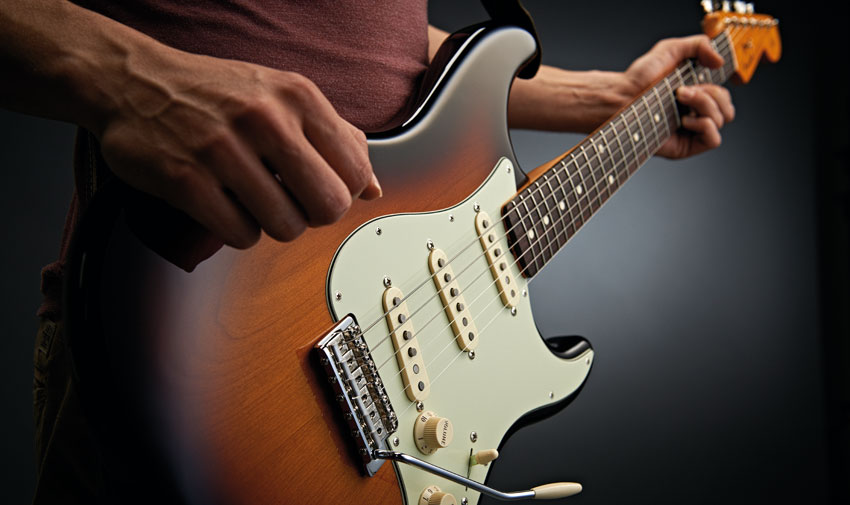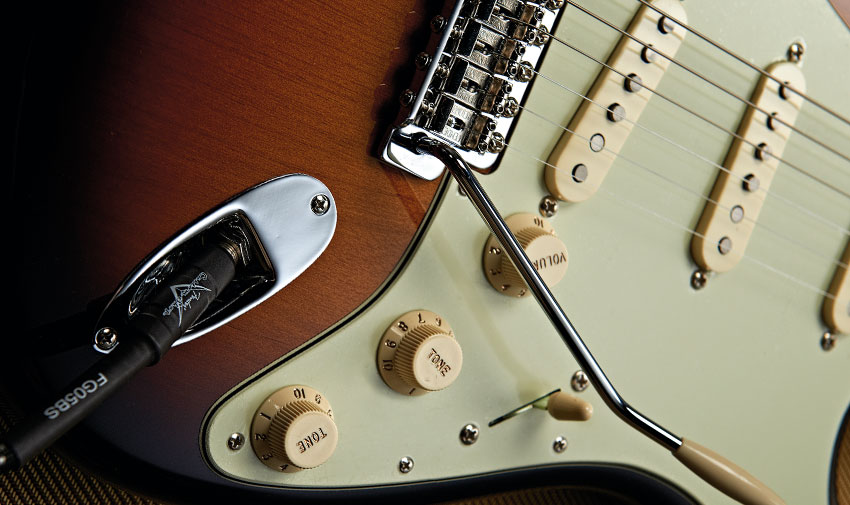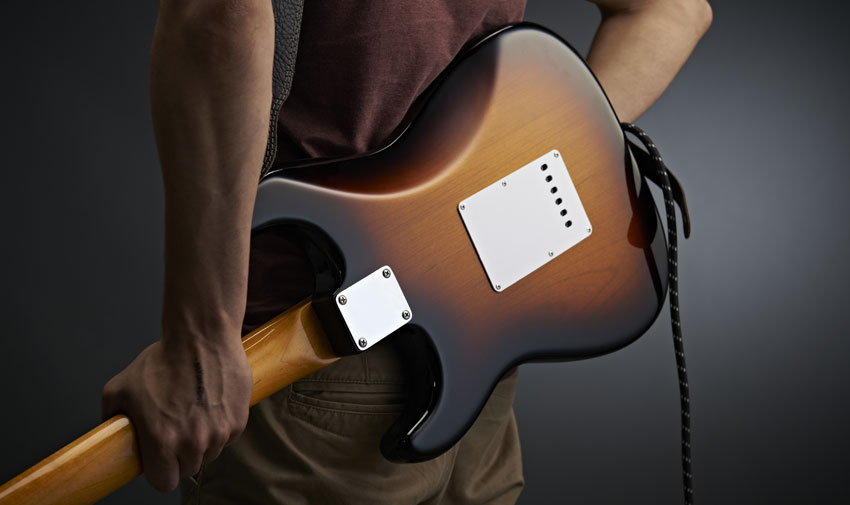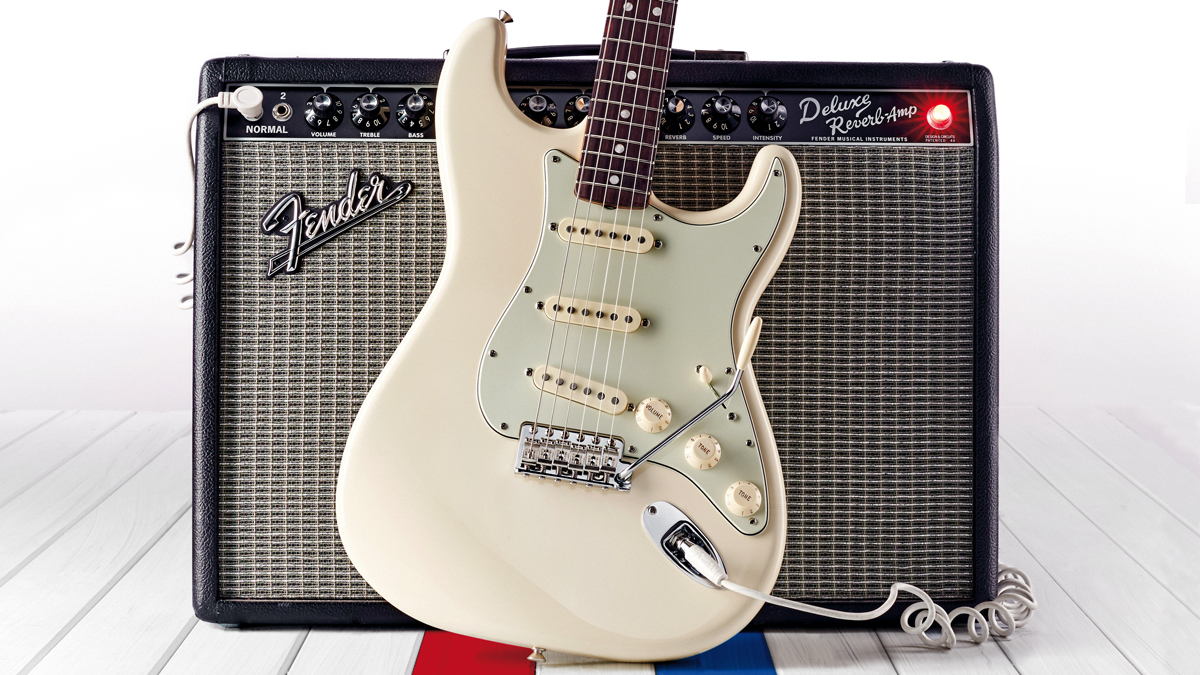MusicRadar Verdict
The perfect choice if you can't stretch to a Fender American Vintage-series instrument. More colours please!
Pros
- +
Beautiful finish, feel and tone. Build quality.
Cons
- -
For this price, not a lot.
MusicRadar's got your back

Fender Classic Series '60s Stratocaster Lacquer review

Pickups

Bridge

Back
We take a look at the Classic Series '60s Stratocaster Lacquer, an affordable new Fender. The first Mexican-made, vintage-themed Strat with a gloss nitrocellulose finish.
At this year's Frankfurt Musikmesse, Fender announced that it was, for the first time ever, producing guitars with gloss nitrocellulose 'lacquer' finishes from its factory in Ensenada, Mexico.
The finishes on the Mexican-made Road Worn series are nitrocellulose, but they're a long way from the pristine, shiny stuff here. Since the late 1980s, these much-lauded - and much misunderstood - lacquers have been the preserve of the USA-made American Vintage (née US Vintage) and Custom Shop guitars, putting them out of reach for many. As you can see, they've just come a whole lot closer.
What is nitro?
Many players and pundits agree that the old, thinly-applied solvent-based lacquers over the very thinnest grain fillers/sealers are the 'best' choice for authentic vintage Fender feel, looks and tone. Contentious and confusing? Yep...
"Fender tells us these guitars have polyester undercoats, followed by five coats of Seagrave L-4540 high-solids nitrocellulose lacquer"
Fender used both nitrocellulose and acrylic lacquers in the 1950s and 60s. Developed for cars of the period, you can identify which is which by their associated Dupont paint codes (available online) prefixed with either 'Lucite' (acrylic) or 'Duco' (nitrocellulose). Lake Placid Blue (Lucite 2876-L), for example, is acrylic, while Sonic Blue is nitrocellulose (Duco 2295).
The nitrocellulose and acrylic components acted as binding agents for the colour pigment that then needed lots of solvent in order to be sprayed properly onto a car or a guitar. That meant a highly flammable, environmentally unfriendly cocktail, the use of which (high VOC: Volatile Organic Compound) has become increasingly and very strictly regulated.
All the while, more robust, easier-to-apply, quicker-to-cure, low-VOC finishes (notably polyurethane and polyester) were developed and are now the norm for most makers, including Fender.
Using nitrocellulose for vintage-style guitars in limited quantities is still a hearts-and-minds win for Fender, yet it remains a contentious subject because of widespread confusion over what a 'proper' nitro finish actually is, was, or indeed should be!
For the record, Fender tells us these guitars have polyester undercoats, followed by five coats of Seagrave L-4540 high-solids nitrocellulose lacquer for the colour and top coats. Sanded and buffed to that glossy shine over the beautifully contoured, two-piece alder body, these look superb.
Feel and sounds
Compared with the regular Classic Series' more glassy polyester and urethane finishes, there's a hint of extra 'stickiness'; they tend to feel better a few years down the line. Coupled with the curvy, 184mm (7.25-inch) radius board and vintage-style frets (2.1mm), it's a traditional playing ride. The fret tops have been given a nice dressing, so they feel just a smidgen wider than they otherwise might.
The '60s model's rounded, C-profile neck feels like 'home' to this reviewer, although it doesn't noticeably taper in thickness like the new American Vintage necks. A great setup ensures that the vibrato works well, proving that the ol' Synchronized Tremolo is not the unusable lump some people have it down for. It's set up to float so you can shimmer some Shads' or lilt a bit of Lenny by SRV. Stop short of heavy rock dive-bombs: these guitars aren't for that.
Sound wise, both this reviewer and our sound engineer had good things to say when recording our accompanying demo. When you've been buying, trading and playing Strats for a long time, you get a feel of where they're going to sit on the sound spectrum, from the "Yeah, that adequately ticks the boxes of the classic sound," through to "I will take literally any sort of financial risk open to me in order to to own this guitar."
"The best made, best value, vintage-inspired Strat to come out of Fender since the 60s"
Sure, we're not into Custom Shop levels of love here, but we're way closer than their price tags would suggest: a paradoxical fatness of fundamental tone, yet transparency of delivery that defines a 'good' Strat. We'd attach the second tone pot to the bridge pickup, but that's it. No immediate pickup replacement, no need to change saddles or bridge block: happy days.
Fender's regular Classic Series guitars hit a sweet spot of vintage aesthetics and affordable pricing that's bang-on for people who 'just want a nice Strat'. They also provide a decent platform for higher-end pickup and hardware upgrades down the line.
But for those of more nitpicking bent (this reviewer included) the urethane and polyester finishes let them down; they just don't feel, look or age like the older-style lacquers. Hooray: these guitars might just solve that issue.
Only time will tell how they'll weather, but we'd venture that we're looking at the best made, best value, vintage-inspired Strat to come out of Fender since the 60s.
With its latest free update, Ableton has finally turned Note into the app I always wanted it to be
Technically capable, but struggle to make your tunes sound musical? 5 simple music theory hacks to make your tracks stand out
"Despite its size, it delivers impressive audio quality and premium functions as well as featuring a good selection of inspired sounds": Roland GO:Piano 88PX review










